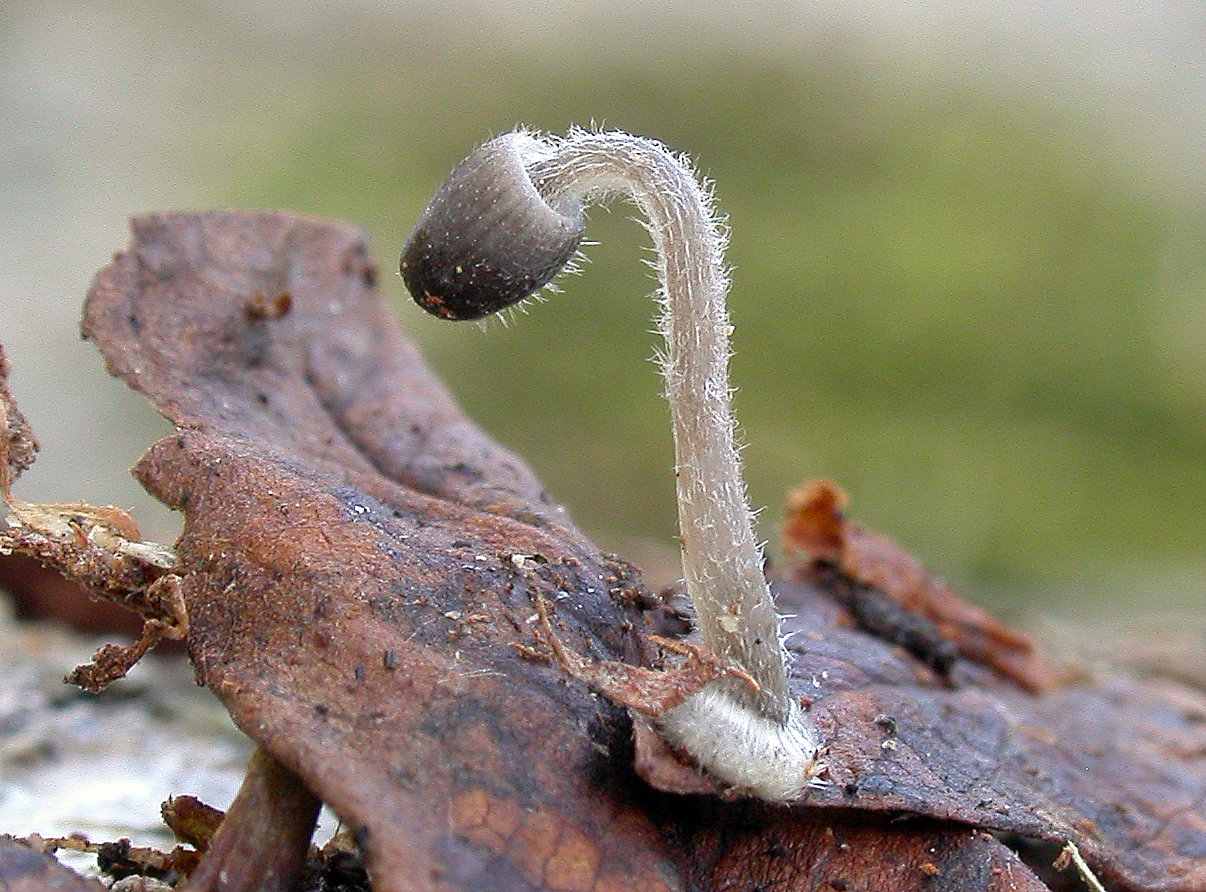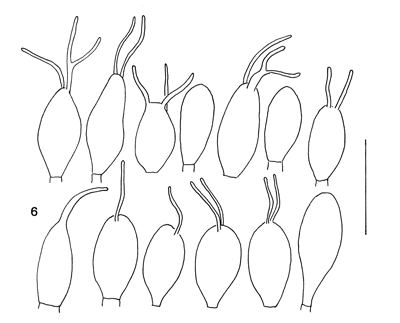Mycena aciculata
Mycena aciculata
- Innhold
- Description
- Ecology and distribution
Description
cheilocystidia
1. Hyphae of the pileipellis, 2. Basidia, 3. Spores, 4. Pileo-setae, 5. Hypha of the cortical layer of the stipe with part of a caulocystidium.
Cap 3-8 mm across, hemispherical to broadly conical, sometimes becoming plano-convex, occasionally somewhat centrally depressed, translucent-striate, sulcate, pubescent to conspicuously setose, particularly at the centre, grey to grey-brown. Gills 12-15 reaching the stem, ascending, adnexed, free or forming a pseudocollarium, white to pale grey. Stem 10-50 x 1-2(-3) mm, hollow, cylindrical, pubescent, grey; springing from a ca. 1 mm wide grey, grey-brown to whitish grey, pubescent basal disc. Odour none. Basidia 15-22 x 6.5-8 µm, clavate, 4-spored. Spores 7.5-10.5 x 3.8-4.7 µm, Q = 1.7-2.3, pip-shaped, non-amyloid. Cheilocystidia 11.5-30 x 5.5-13.5 µm, clavate or fusiform, apically broadly rounded or gradually drawn into one or two or three slender necks, or with one single neck or two-three necks abruptly emergent from the surface of the cheilocystidium, usually unbranched but occasionally branched, straight, curved or flexuous, 4.5-33 x 1 µm. Pleurocystidia absent. Lamellar trama dextrinoid. Hyphae of the pileipellis 2-11 µm wide, branched, covered with straight to curved, branched to unbranched, cylindrical excrescences 2-12 x 1 µm, embedded in gelatinous matter, with long, very thick-walled, one-celled hairs (pileo-setae), to 200 µm long, arising from the trama. Hyphae of the cortical layer of the stem 2-3.5µm wide, smooth. Caulocystidia similar to the pileo-setae, to 250 µm long, thick-walled to solid, with bulbous base. Clamp connections generally absent, but sometimes present at base of basidia and cheilocystidia.
Ecology and distribution
Solitary or in small groups on decaying debris, e.g. twigs, conifer needles, rotten logs, fallen leaves, grass stems and fallen conifer cones. Summer to autumn. Widespread in Norway but rare or overlooked.


